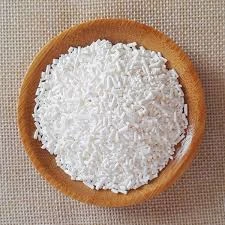
e222 food additive
Understanding E222 Food Additive A Comprehensive Overview
In the constantly evolving world of food science, additives play a crucial role in enhancing the safety, quality, and longevity of food products. Among the myriad of food additives, E222, also known as Sodium Bisulfite or Sodium Hydrogen Sulfite, has gained attention for its diverse applications in the food industry. This article aims to delve into the characteristics, uses, safety concerns, and regulatory standards associated with E222.
What is E222?
E222 is an inorganic compound that is commonly used as a preservative and antioxidant in various food products. It appears as a white crystalline powder and is highly soluble in water. Its chemical formula is NaHSO₃, reflecting its composition of sodium, hydrogen, sulfur, and oxygen. E222 functions primarily by inhibiting enzymatic browning and microbial growth, thereby prolonging the shelf life of food items.
Common Uses of E222
E222 is widely utilized across different sectors in the food industry. Its main applications include
1. Preservative E222 helps prevent spoilage in fruits, vegetables, and processed foods by inhibiting the growth of bacteria, yeasts, and molds.
2. Antioxidant It is used to prevent the oxidation of certain food components, particularly in products like dried fruits, beverages, and canned goods. By reducing oxidative deterioration, E222 maintains the color, flavor, and texture of food.
e222 food additive

4. Baking Industry In the baking sector, E222 is sometimes added to dough to improve its elasticity and fermentation process.
Safety and Regulatory Standards
The safety of food additives like E222 is a matter of significant concern for both consumers and regulatory bodies. E222 is generally recognized as safe when used within established guidelines. The European Food Safety Authority (EFSA) and the U.S. Food and Drug Administration (FDA) have evaluated the safety of sodium bisulfite. While it is permitted for use in certain food products, there are strict regulations regarding its concentration levels.
Potential Health Concerns
Despite its safety when used appropriately, E222 can pose health risks for some individuals, particularly those with sulfite sensitivities or asthma. Symptoms associated with sulfite sensitivity may include headaches, nausea, and respiratory issues. Consequently, it is crucial for manufacturers to label products containing E222 adequately. This labeling helps consumers make informed decisions regarding their food choices, especially for those individuals who may be susceptible to sulfite-related reactions.
The consumption of high levels of E222 can lead to other health concerns as well. Excessive intake may provoke gastrointestinal distress or exacerbate conditions such as allergic reactions. Therefore, moderation is essential in the consumption of foods containing this additive.
Conclusion
E222, or Sodium Bisulfite, holds an essential place in the food industry as a preservative and antioxidant. Its effectiveness at prolonging the shelf life of food products and enhancing their quality cannot be understated. However, as with any food additive, awareness of its potential health implications is vital. Regulatory oversight ensures that E222 is used appropriately, safeguarding public health while allowing for the benefits that such additives provide.
In summary, E222 is a multifaceted food additive that contributes significantly to food preservation and quality. As consumers grow more conscious about the ingredients in their food, understanding additives like E222 becomes increasingly important. Through informed choices and awareness, individuals can navigate the complexities of food additives and enjoy the benefits of modern food preservation techniques while minimizing health risks.
-
Pure Sodium Dichloroisocyanurate Dihydrate | Powerful DisinfectantNewsAug.29,2025
-
Industrial Chemicals: Quality & Purity for Every IndustryNewsAug.28,2025
-
Nitrile Rubber Honoring Strict Production StandardsNewsAug.22,2025
-
Aspartame Ingredients Honoring Food Safety ValuesNewsAug.22,2025
-
Fertilizer for Balanced Plant NutritionNewsAug.22,2025
-
Cyanide Gold Processing with High Purity AdditivesNewsAug.22,2025
-
Formic Acid in Textile Dyeing ApplicationsNewsAug.22,2025
Hebei Tenger Chemical Technology Co., Ltd. focuses on the chemical industry and is committed to the export service of chemical raw materials.
-

view more DiethanolisopropanolamineIn the ever-growing field of chemical solutions, diethanolisopropanolamine (DEIPA) stands out as a versatile and important compound. Due to its unique chemical structure and properties, DEIPA is of interest to various industries including construction, personal care, and agriculture. -

view more TriisopropanolamineTriisopropanolamine (TIPA) alkanol amine substance, is a kind of alcohol amine compound with amino and alcohol hydroxyl, and because of its molecules contains both amino and hydroxyl. -

view more Tetramethyl Thiuram DisulfideTetramethyl thiuram disulfide, also known as TMTD, is a white to light-yellow powder with a distinct sulfur-like odor. It is soluble in organic solvents such as benzene, acetone, and ethyl acetate, making it highly versatile for use in different formulations. TMTD is known for its excellent vulcanization acceleration properties, which makes it a key ingredient in the production of rubber products. Additionally, it acts as an effective fungicide and bactericide, making it valuable in agricultural applications. Its high purity and stability ensure consistent performance, making it a preferred choice for manufacturers across various industries.





